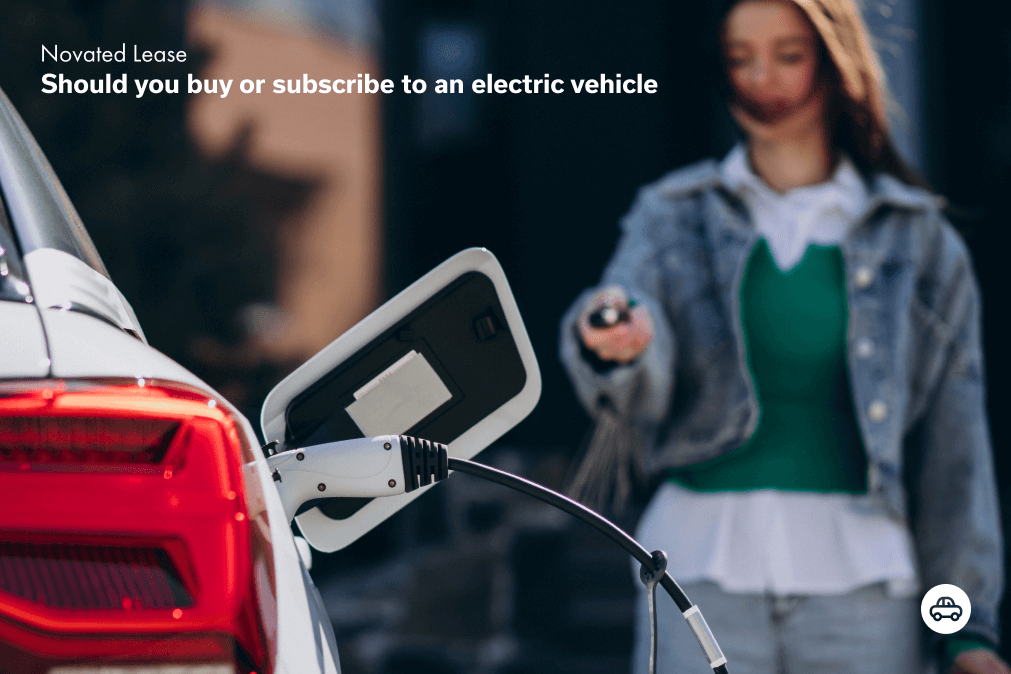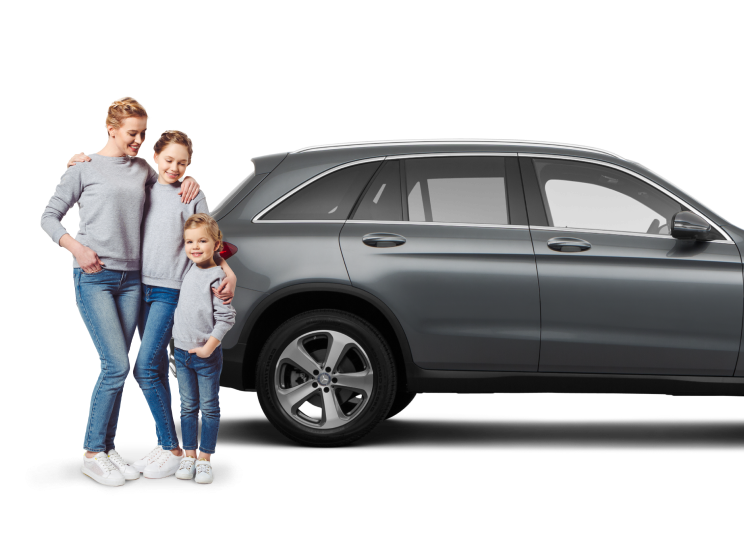Are you in the market for a new family car?
With so many options available, it can be overwhelming to decide which one is the right fit for you and your family’s needs.
But don’t worry, we’ve got you covered.
Our goal is to make the process as straightforward and stress-free as possible. With our guidance, you’ll be driving away in your perfect family car in no time.
So whether you’re a first-time car buyer or a seasoned pro, read on for our top tips and tricks for finding the perfect family car.
On this page:
1. Consider your needs
When considering your needs for a new family car, think about how many people you will need to transport on a regular basis.
For example, if you have a family of five, you will likely need a car with a larger seating capacity. It’s also important to think about any special needs or requirements, such as car seats for young children or wheelchair accessibility.
In addition to the number of people you’ll be transporting, consider what kind of activities you’ll be using the car for. If you’ll primarily be using it for commuting to work or school, fuel efficiency may be a priority. If you plan on taking road trips or have a need for hauling cargo, a larger vehicle with more storage space may be a better fit.
Finally, consider the type of driving you’ll be doing. If you live in an urban area with a lot of traffic, a smaller, more manoeuvrable car may be a better option. If you live in a rural area with long stretches of road, a larger car with better visibility may be a better fit.
By considering the number of people you’ll be transporting, the activities you’ll be using the car for, and the type of driving you’ll be doing, you’ll be able to determine the size and type of car that’s best for you and your family’s needs.
2. Research different models
Research different makes and models of cars that meet your needs. This allows you to easily compare the features, safety ratings, and reviews of the cars that you are interested in.
Make a list of the features that are important to you and your family.
Look for cars that have received high safety ratings from organisations such as the Australasian New Car Assessment Program (ANCAP), which crash tests cars and conduct performance assessments to give a simple star rating.
As well as looking at the features and safety ratings, start to read reviews from other car owners and experts. This will give you an idea of the car’s performance, reliability, and any potential issues you should be aware of. Online resources like consumer reports or car review websites can be a great place to start.
3. Test drive
Test driving is a crucial step in the car buying process. It allows you to get behind the wheel of a car and experience how it handles, rides and feels, to see if it’s comfortable for you and your family.
When test driving a car, take note of how the car handles on the road, the visibility, and the ease of parking. Pay attention to the car’s ride quality and how smooth the transmission is. Also, check the car’s visibility, and see if the seat, steering wheel and mirrors are adjustable, and comfortable for you to drive.
During the test drive, take the car on different types of roads, like highways and city streets, to see how it handles different driving conditions. Also, be sure to check the car’s blind spots and test its safety features like lane departure warning, automatic emergency braking, and parking assist.
Ask if you can bring your family along for the test drive so that everyone can get a feel for the car, and see if it’s comfortable for everyone. Consider things like legroom, headroom, and cargo space.
It’s a good idea to test drive several different cars, so you can compare them and get a sense of what you like and don’t like. This will help you choose a car that you’ll be happy with in the long run.
4. Check the Safety Features
When checking the safety features of a car, make sure that it has all the safety tech you want and need.
This includes features like:
- Airbags (including curtain airbags)
- Anti-lock brake
- Stability control
- Advanced driver assistance systems (ADAS) like lane departure warning, automatic emergency braking, and parking assist
- Child occupant protection
- Parking sensors
Finding a car that has received a high safety rating from ANCAP can give you reassurance that the car will provide your family with a lower risk of injury or death in the event of a crash.
Another important aspect to consider is the car’s structural integrity and build quality, which can also play a significant role in its safety performance. Look for a car that has a strong frame, crumple zones, and other safety features that help protect the occupants in the event of a crash.
By checking the safety features and safety ratings of a car, you can have peace of mind that you and your family will be safe while driving.
If you are comparing the difference between new and used cars, another thing to consider is the standard advanced safety features that are now built into many new cars on the market, including the basic models.
5. Look at fuel efficiency
Think about how much you drive and how much you’re willing to spend on fuel in the long run.
Fuel efficiency is measured in litres per 100 kilometres (L/100km) and it’s a way to determine how much fuel a vehicle needs to travel a certain distance.
Cars with better fuel efficiency will use less fuel and will cost less to operate over time. This can be a significant saving, especially if you drive a lot.
Look for a car with low litres per 100 kilometres (L/100km) rating; it will save you money on fuel costs in the long run.
When comparing fuel efficiency, consider the type of driving you’ll be doing. If you mostly drive in the city, a car with a better city L/100km may be more beneficial for you. If you’ll mostly be driving on the highway, a car with a better highway L/100km may be a better fit.
Cars with more advanced features and a higher price tag may have better fuel efficiency.
It’s a good idea to consider the fuel efficiency of the car models you are interested in and compare them to determine which one will be the most cost-effective for you.
6. Check the maintenance cost
Research the cost of regular maintenance, including oil changes, tyre rotations, and any other routine maintenance that may be required. These costs can add up over time, so you should consider them when making your purchase decision.
Find out more about the recommended maintenance schedule for the car you’re interested in. This information can typically be found in the owner’s manual or on the manufacturer’s website. Make note of the recommended intervals for oil changes, tyre rotations, and other routine maintenance.
Contact local dealerships or independent mechanics to get an estimate for the cost of these services. Keep in mind that the cost may vary depending on the location, type of service, and type of car you have.
Also, consider if the car is still under warranty and if the maintenance costs are covered. If it’s not covered, then it’s important to keep in mind that you’ll be responsible for paying for these services out of pocket.
7. Check for reliability
A reliable car is one that is less likely to break down and require repairs, which can save you money in the long run.
One way to check for reliability is to look at the car’s track record. You can do this by researching the car’s history of recalls, common problems, and customer reviews. Websites such as Choice, RACV, and Redbook are good resources for this information.
You can also look for cars that have received awards for reliability and longevity, such as those from RACV. These awards are based on a combination of data from surveys of car owners and independent testing.
Another way to check for reliability is to look at the car’s warranty. A longer warranty usually indicates that the manufacturer has confidence in the car’s reliability.
8. Research cars with Advanced Driver Assistance Systems
These systems are designed to make driving safer and more comfortable.
While some models may offer more than others, you should consider which ones are non-negotiable when it comes to your family’s safety.
Some examples of ADAS include:
- Lane departure warning: This system uses cameras or sensors to detect when the car is drifting out of its lane and alerts the driver to take corrective action.
- Autonomous emergency braking: This system uses cameras or sensors to detect potential collisions and automatically applies the brakes to help avoid or mitigate the impact.
- Adaptive cruise control: This system uses radar or cameras to detect the speed and distance of the car in front, and automatically adjusts the speed of the car to maintain a safe following distance.
- Park assist: This system uses parking sensors or cameras to help the driver with steering when parking, making it easier to park the car in tight spaces.
- Blind spot monitoring: This system uses sensors to detect other cars in the blind spot, and alerts the driver to their presence.
- Forward collision warning: This system uses a radar sensor to alert or warn you of a hazard ahead so you can break or swerve on time.
- Electronic stability control: This system helps prevent you from losing control in curves or steering manoeuvres by stabilising your car when it begins to lose control.
- Rear cross traffic alert: This system informs the driver if another car is approaching from the left or right when the car is in reverse and backing out of a parking space.
- Safe exit assist: This system lets the driver know if a vehicle approaching from the rear is detected when the passenger opens a door.
The availability of these advanced systems can give you a better idea of the car’s safety features, and help you decide which systems are non-negotiable for your new car purchase.
9. Don’t be swayed by fancy features
Try not to get swayed by fancy features that may drive up the price of the car.
These features may include things like a large infotainment screen, a premium sound system, leather seats, cup holders, or even a panoramic sunroof.
Sure, those fancy car features may seem appealing, but let’s face it – if your car is like the average vehicle, it spends 95% of its time parked and waiting for you to use it. It’s time to separate the essentials from the extravagance and make sure your car is ready for action when you need it most.
Make a list of the features that are important to you and prioritise them based on your needs. Keep in mind the cost of these features and whether they are worth it. While a large infotainment screen may be great for entertaining kids on long trips, safety should always come first – avoid features that could distract you while driving.
10. Check the warranty
Check the warranty offered by the manufacturer and what it covers.
A warranty is a guarantee from the manufacturer that the car will be free from defects in materials and workmanship for a certain period of time.
The manufacturer’s warranty typically covers the cost of repairs or the replacement of defective parts. You should familiarise yourself with the terms of the warranty, including the length of coverage, what parts and systems are covered, and any exclusions or limitations.
Dealers may also offer additional warranties that can provide extra coverage, such as an extended warranty or a maintenance plan. These warranties can be beneficial, but you should make sure you understand the terms and coverage of the additional warranty and how they differ from the manufacturer’s warranty.
It’s a good idea to compare the different warranties offered by different manufacturers and dealers to see which one offers the best coverage for your family’s needs and budget.
11. Negotiate the price
When it comes to purchasing a family car, dealers typically offer the best price. However, private sellers are often more open to price negotiations. Keep in mind that the price of a car is not set in stone.
Before negotiating the price, it’s important to do your research and know the car’s market value. Websites such as Redbook can provide you with the current market value of the car. This will give you a good idea of what the car is worth and what you should expect to pay.
When negotiating the price, you need to be prepared and have a clear idea of the price you’re willing to pay. Be confident and assertive, but also be willing to compromise.
Consider other factors such as financing options, trade-in value, and any additional warranties or services that may be included in the deal.
Remember to take your time and don’t rush into a decision.
12. Consider a hybrid or electric car
Hybrid and electric cars are becoming more and more popular. These types of cars offer good fuel efficiency and reduced emissions, which can help you save money on fuel costs and reduce your environmental impact.
Hybrid cars are powered by both a petrol engine and an electric motor. The electric motor is powered by a battery, which is recharged by the petrol engine or through regenerative braking. This allows the car to run on electric power for short distances, which can help improve fuel efficiency.
Electric cars are powered entirely by electricity and have no petrol engine. They are charged at an electric charging station and have a limited range. However, the range of electric cars is increasing, and they are becoming more practical for everyday use.
Both hybrid and electric cars produce fewer emissions than traditional petrol cars, which can help reduce your environmental impact. Additionally, electric cars are cheaper to operate, as electricity is cheaper than petrol.
When considering a hybrid or electric car, you should research the availability of charging stations, the car’s range and the cost of the car compared to traditional petrol cars.By opting for a hybrid or electric car, you can enjoy several financial benefits. Electric cars have notably lower maintenance costs compared to petrol or hybrid vehicles, resulting in potential long-term savings.
13. Look into certified pre-owned cars
Deciding between a new vs used car can also make the decision to buy a car much more complex.
The family car market is huge at the moment, and if you have the time to wait, a new car may just be on the cards. However, for some growing families, a wait time of more than 3 months may just make buying a new car impossible.
The good news is that due to the automotive industry being so dense, there are many dealers offering certified pre-owned cars for a competitive price. Not only do these cars still offer the same safety technology as some of their new car competitors, but they may also come with dealer warranties to make it easier to decide on your new family car.
14. Consider a smaller car
Sure, you may need a car with enough space for family life, but does it really need to be a larger car with higher ground clearance?
Many smaller SUVs have enough interior space for rear passengers and older kids. And if the car has a decent amount of boot space, you can store any belongings such as school bags or groceries in the boot to ensure maximum leg room.
Smaller cars may even offer better fuel economy than their larger counterparts, with a smaller price tag, making family road trips more realistic.
And if child seats are a concern, there are many compact options available on the market, which include extended rear-facing (ERF) seats through to booster seats. So you never need to compromise on the safety of your young family when it comes to family cars.
15. Research car subscription services
A car subscription service is an excellent way to purchase a family car with confidence..
With the option to drive the car for an extended period, you can truly get to know it intimately before making a purchase. This eliminates any doubts and allows you to buy with complete confidence when you’re ready.
One of the greatest advantages of a car subscription is its flexibility. As the needs and budgets of families constantly change, a subscription allows you to easily swap cars based on your current requirements. This convenience is far superior to the hassle of constantly selling, upgrading, or downgrading over time.
Moreover, a car subscription opens up possibilities that traditional car ownership may not offer. By bundling all costs, including insurance, registration, maintenance and roadside assistance, into a single weekly payment, you can potentially save money while still enjoying a comfortable ride for the whole family. This means you can consider larger family vehicles or even choose from some of the best family cars on the market without straining your budget.
With a car subscription, you can experience the perks of traditional car ownership, drive the ideal family car, and enjoy financial flexibility—all in one convenient package.
The bottom line on buying a family car
The best family car is the one that suits your family’s needs.
Choosing the perfect family car is an important decision that requires careful consideration. From assessing your needs to researching different models, there are many factors to take into account.
Choose a car that is perfect for your family and that will provide you with many years of safe and reliable transportation.Whether you choose a new or used car or even go down the road of a car subscription, carbar is here to help at every step of the way.





